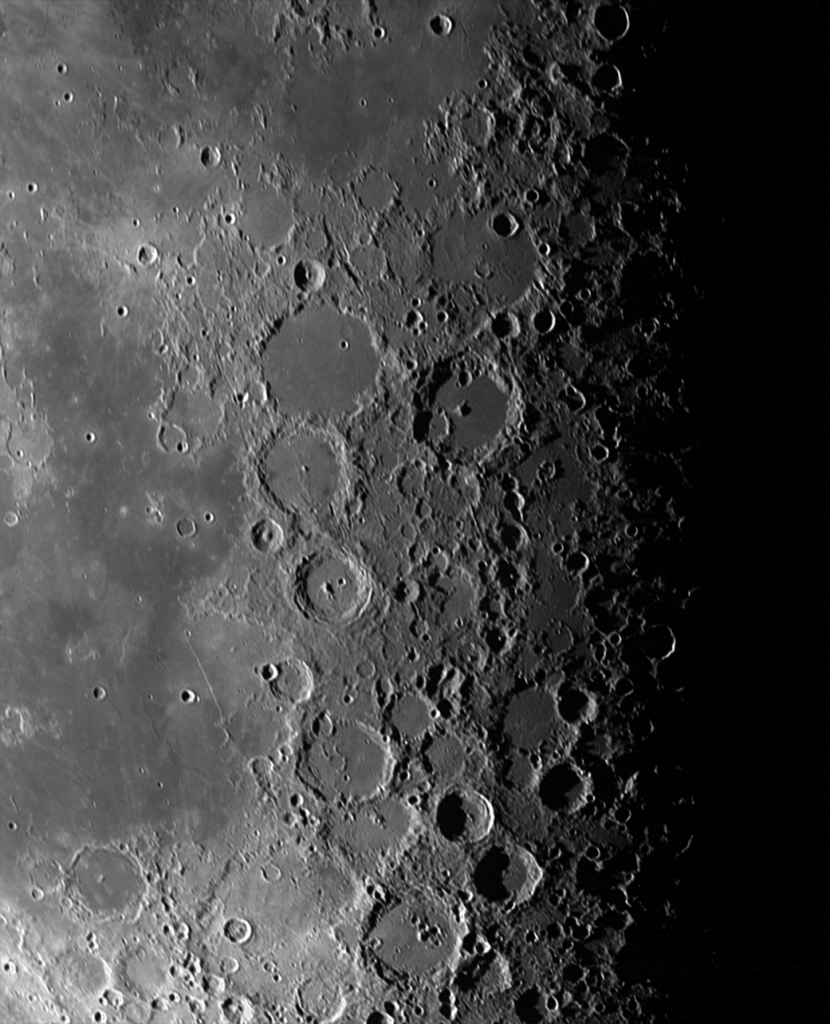Following their splashdown in the Pacific Ocean, Apollo 14 astronauts Alan B. Shepard, Stuart A. Roosa, and Edgar D. Mitchell arrived in the Lunar Receiving Laboratory (LRL) at the Manned Spacecraft Center, now NASA’s Johnson Space Center in Houston, to continue their postflight quarantine. Doctors allowed them to end their 21-day quarantine on Feb. 27, 1971. Shepard, Roosa, and Mitchell began a hectic few weeks of activities, sharing their stories about their Moon landing mission. They traveled to Washington, D.C., for a reception at the White House and speeches before a joint session of Congress. Then they were off to Chicago and New York for motorcades and receptions. The astronauts returned to NASA’s Kennedy Space Center (KSC) to thank the employees who ensured their safe launch. At the Paris Air Show, Shepard, Roosa, and Mitchell met with Soviet cosmonauts attending the international exhibition.
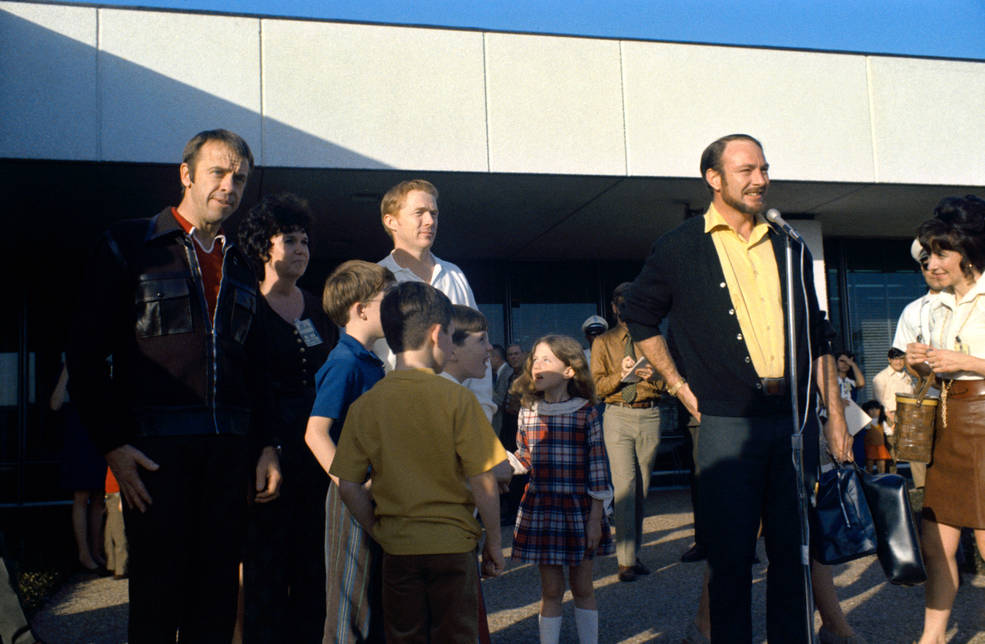
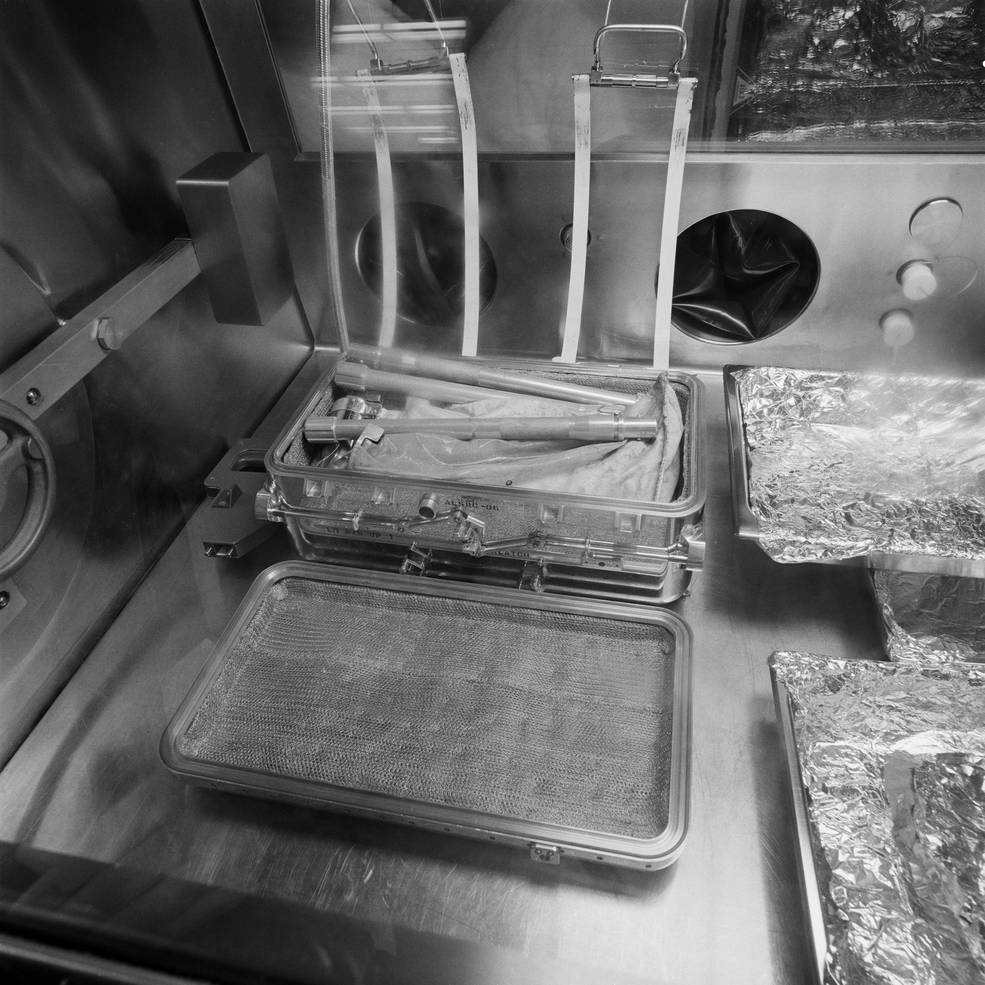
Left: Apollo 14 astronauts Alan B. Shepard, left, Stuart A. Roosa, and Edgar D. Mitchell, leaving the Lunar Receiving Laboratory (LRL) at the end of their 21-day quarantine. Right: Scientists in the LRL opening one of the first Apollo 14 lunar sample containers.
During their stay in the LRL, the three astronauts completed their technical debriefs and had a chance to examine some of the Moon rocks they brought back from the Fra Mauro landing site. Scientists opened the first of the lunar sample containers on Feb. 12, and analyzed the rocks and soil samples. Distribution to the 187 scientific teams in the U.S. and 14 foreign countries of about 15 pounds of the 94 pounds of samples returned began April 6. After doctors declared the astronauts free of any lunar microorganisms, they left the quarantine facility on Feb. 27 and reunited with their families for a quick, quiet weekend. On March 1, they traveled to Washington, D.C., and using the presidential retreat at Camp David, Maryland, as their home base, Shepard, Roosa, and Mitchell participated in press conferences, and in the evening, accompanied by their wives, attended a reception in their honor at the White House, hosted by President Richard M. Nixon. The President presented each astronaut with a NASA Distinguished Service Medal (DSM). The next day, each astronaut addressed a joint session of Congress and, accompanied by Acting NASA Administrator George M. Low, provided a summary of their mission to the House Committee on Science and Astronautics.
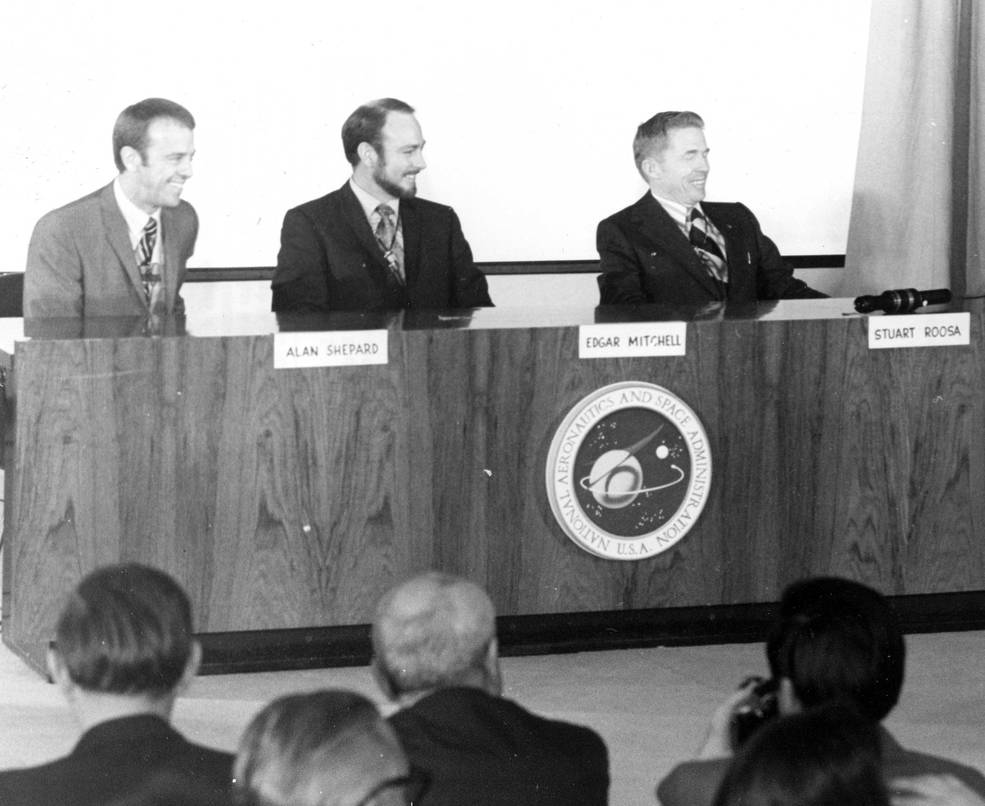
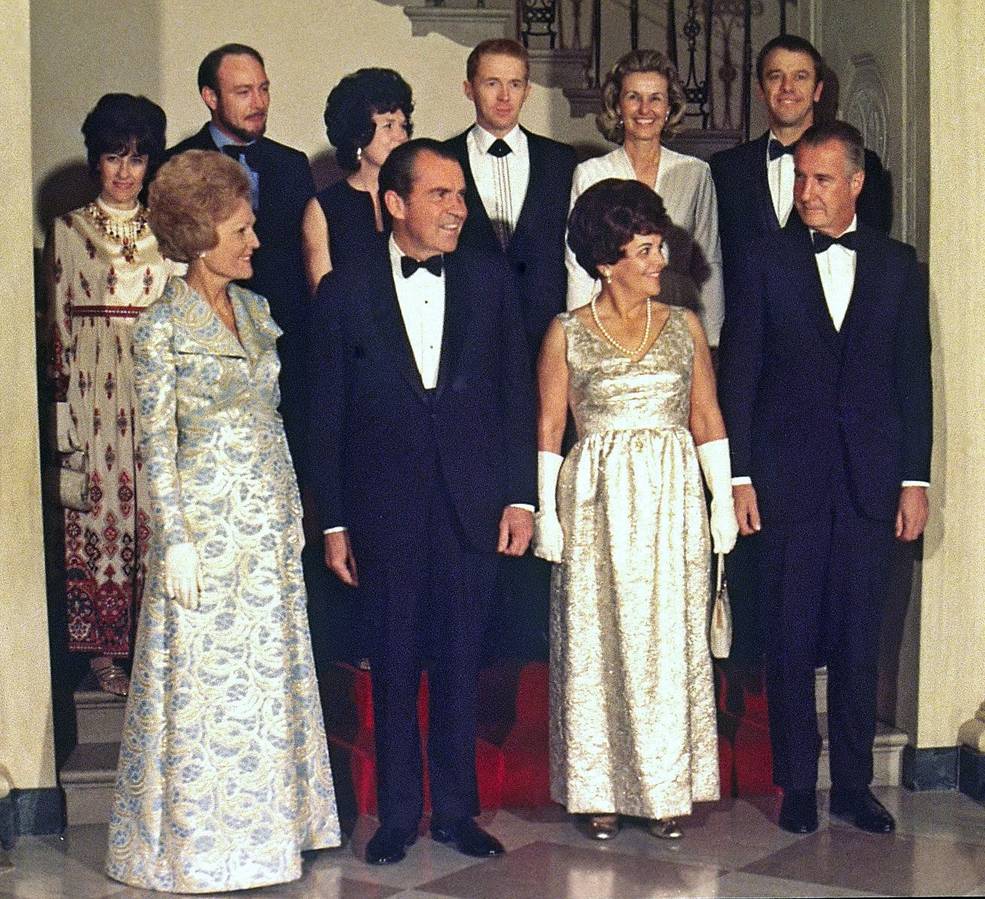
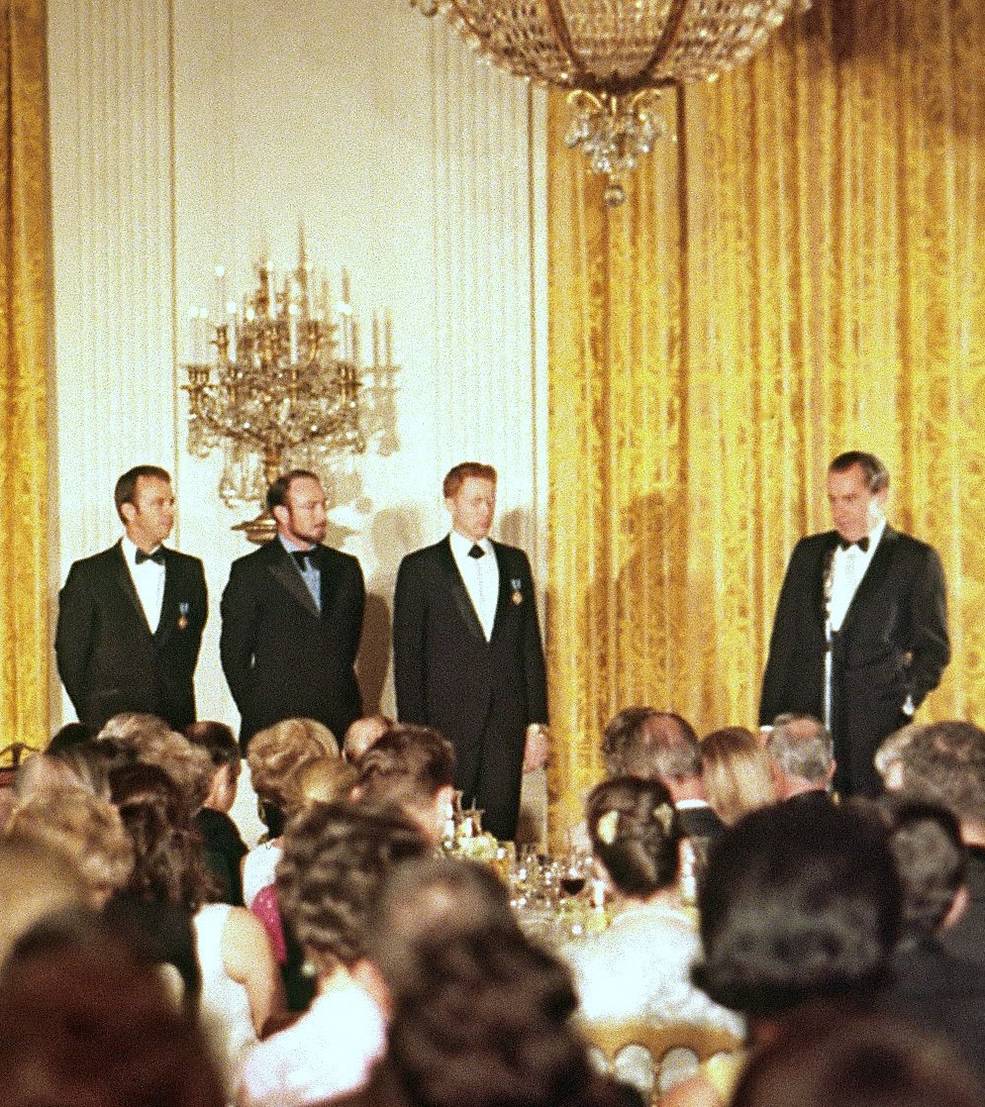
Left: Apollo 14 astronauts Alan B. Shepard, left, Edgar D. Mitchell, and Stuart A. Roosa during a press conference in Washington, D.C. Middle: At a reception in the White House for the Apollo 14 crew – Mrs. Patricia Nixon, front row left, President Richard M. Nixon, Mrs. Elinor Agnew, and Vice President Spiro T. Agnew; Louise and Edgar Mitchell, back row left, Joan and Stuart Roosa, Louise and Alan Shepard. Right: President Nixon, right, presenting NASA Distinguished Service Medals to Shepard, left, Mitchell, and Roosa.
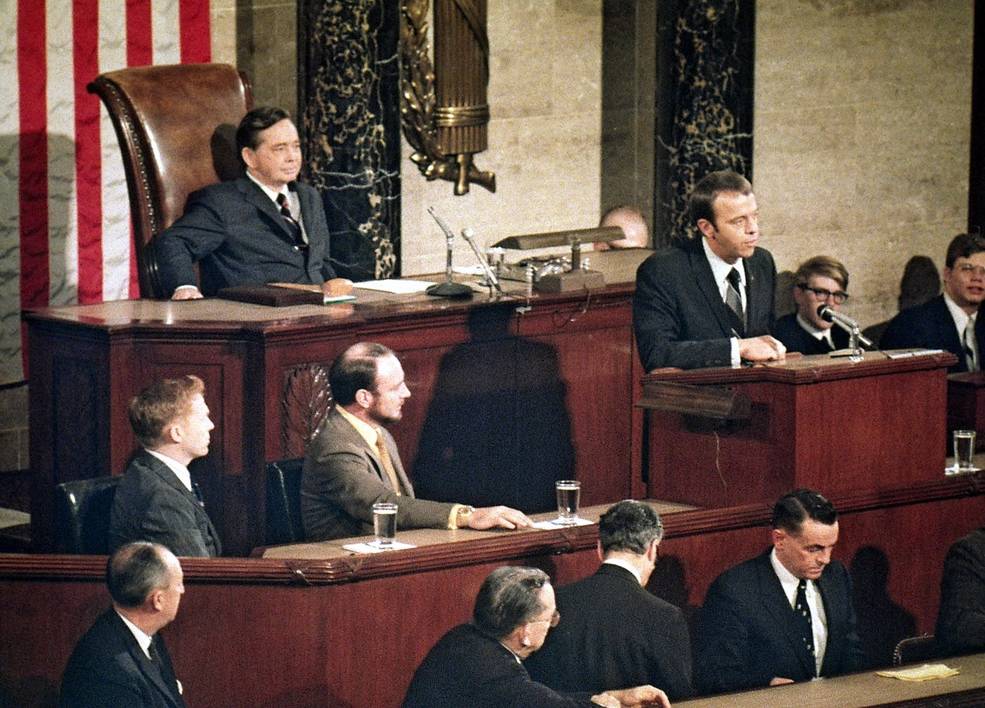
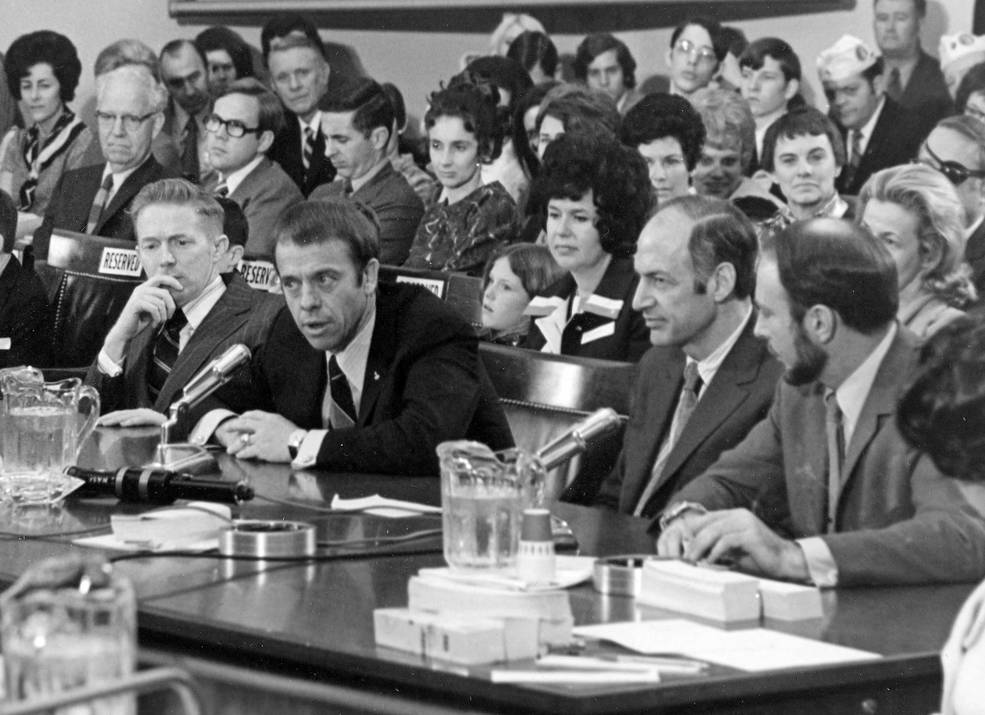
Left: Apollo 14 astronaut Alan B. Shepard addressing a joint session of Congress as Stuart A. Roosa, left, and Edgar Mitchell look on. Right: Apollo 14 astronauts Roosa, left, Shepard, Acting NASA Administrator George M. Low, and Apollo 14 astronaut Mitchell testifying before the House Committee on Science and Astronautics.
From Washington, they traveled to Chicago on March 5, where they rode in a motorcade to city hall where Mayor Richard J. Daley honored them at a city council meeting. They attended a civic luncheon and held a press conference with 3,000 high school students. The next day, they left for New York City, where they visited the United Nations and rode in a motorcade to city hall for an official reception hosted by Mayor John V. Lindsey. Shepard, Roosa, and Mitchell taped a segment of The Tonight Show with guest host Joey Bishop.
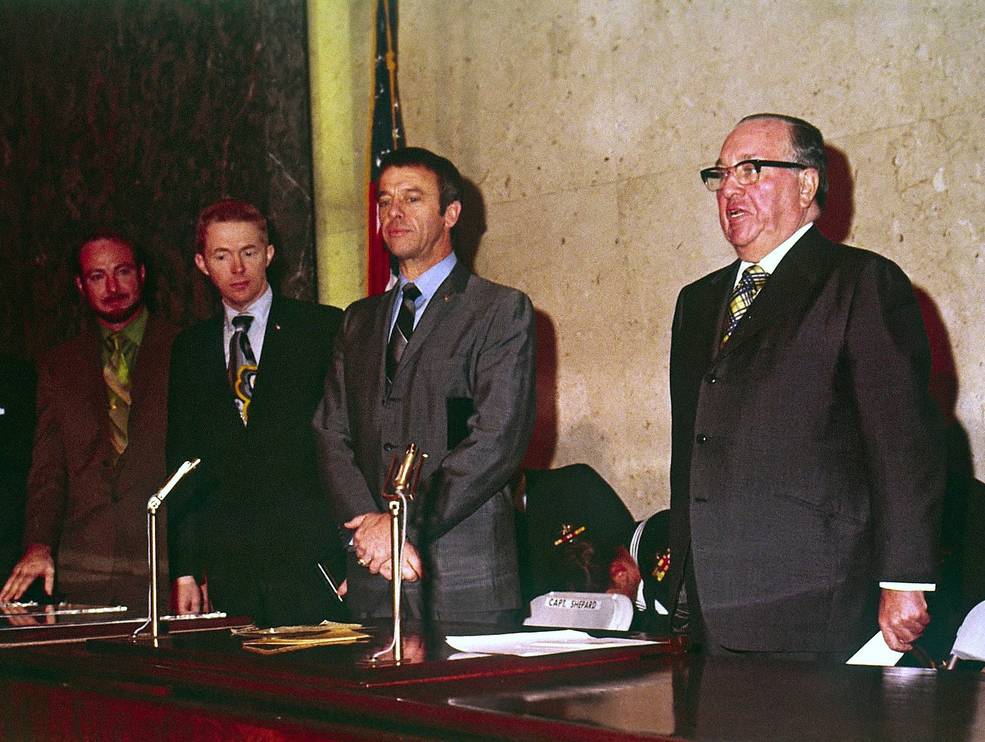
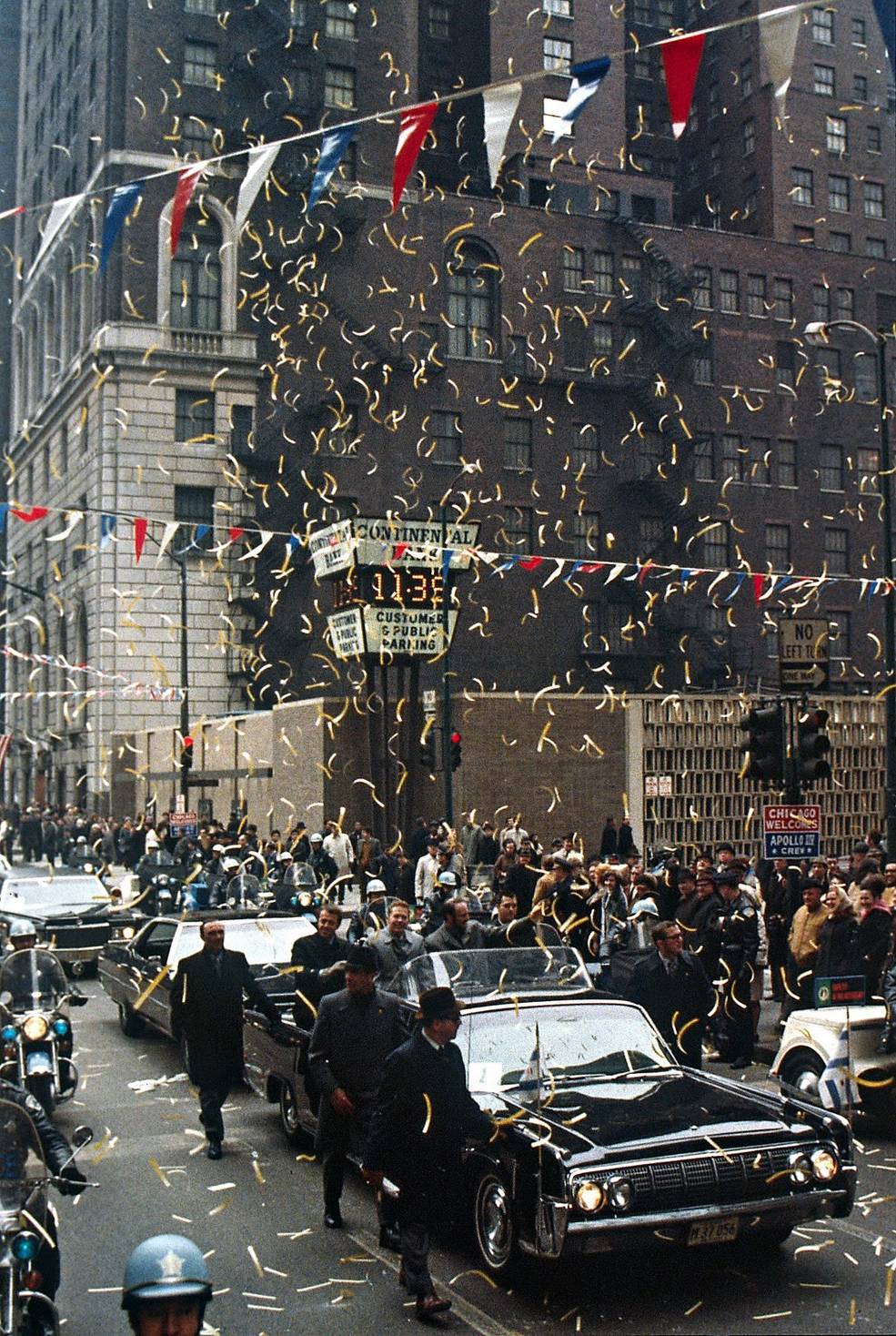
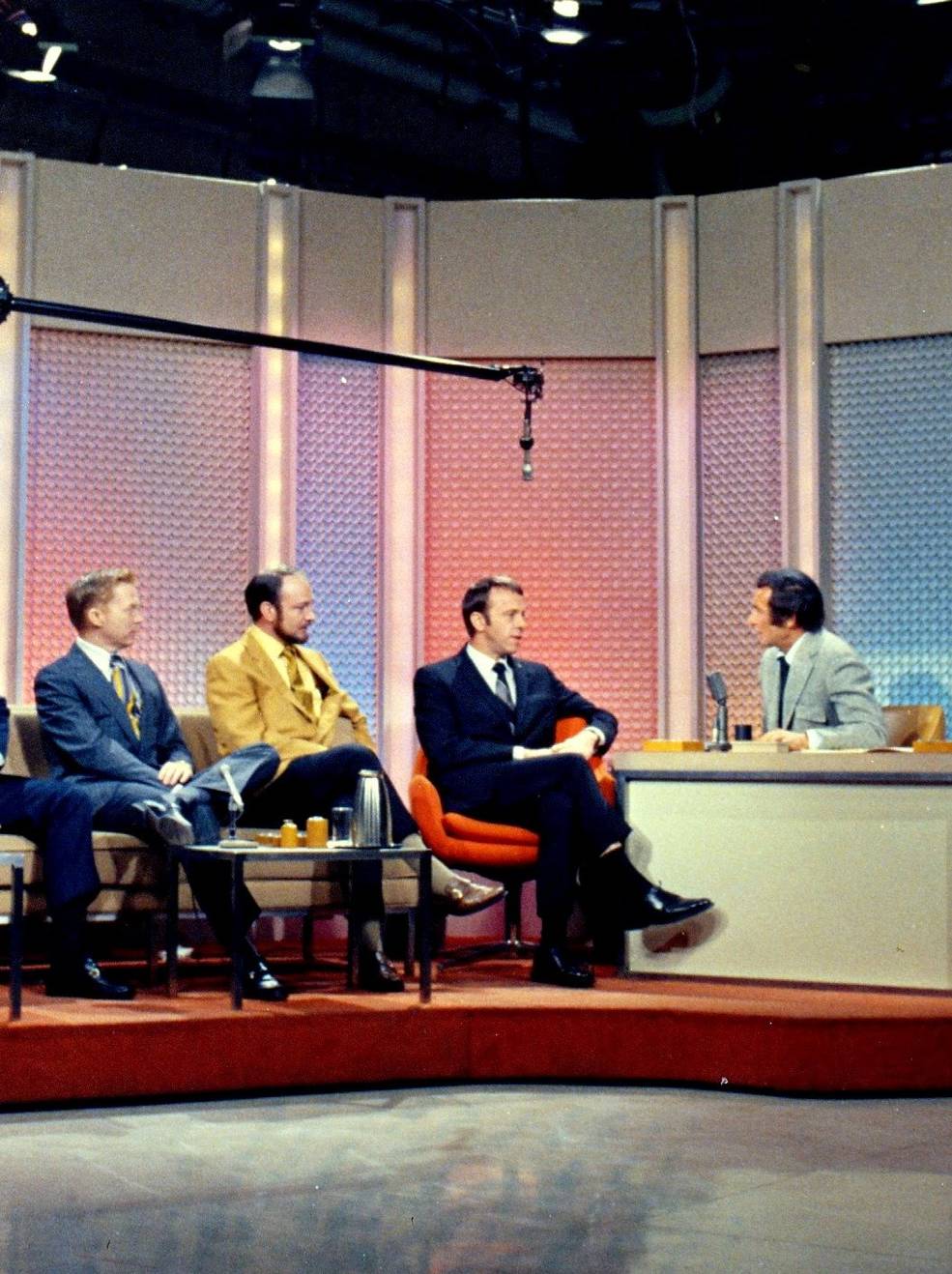
Left: Chicago Mayor Richard J. Daley, right, hosting Apollo 14 astronauts Edgar D. Mitchell, left, Stuart A. Roosa, and Alan B. Shepard at city hall. Middle: Apollo 14 astronauts Shepard, left, Roosa, and Mitchell riding in a motorcade in Chicago. Right: Roosa, Mitchell, and Shepard taping a segment with Tonight Show guest host Joey Bishop.
In a March 12 ceremony, Secretary of the Navy John H. Chaffee presented U.S. Navy DSMs to Shepard and Mitchell, and Secretary of the Air Force Robert C. Seamans presented Roosa with a U.S. Air Force DSM and a Command Pilot Astronaut Badge. On March 23, Shepard, Roosa, and Mitchell traveled to KSC, where in a ceremony in the cavernous Vehicle Assembly Building hosted by Director Kurt H. Debus, they thanked the employees who worked tirelessly to ensure their safe and successful Jan. 31 launch. On April 20, Golf Magazine awarded Shepard a trophy for his golf shots while on the lunar surface. In late May, Shepard, Roosa, and Mitchell traveled to France to attend the annual Paris Air Show, a prestigious international gathering to highlight worldwide advances in aeronautics and astronautics. In the Soviet pavilion, they met with Vostok 4 cosmonaut Pavel R. Popovich and Soyuz 9 cosmonauts Vitali I. Sevastyanov and Andrian G. Nikolayev and examined examples of Soviet space technology. In return, they showed the cosmonauts the Apollo 12 Command Module and other American space hardware on display in the U.S. pavilion.
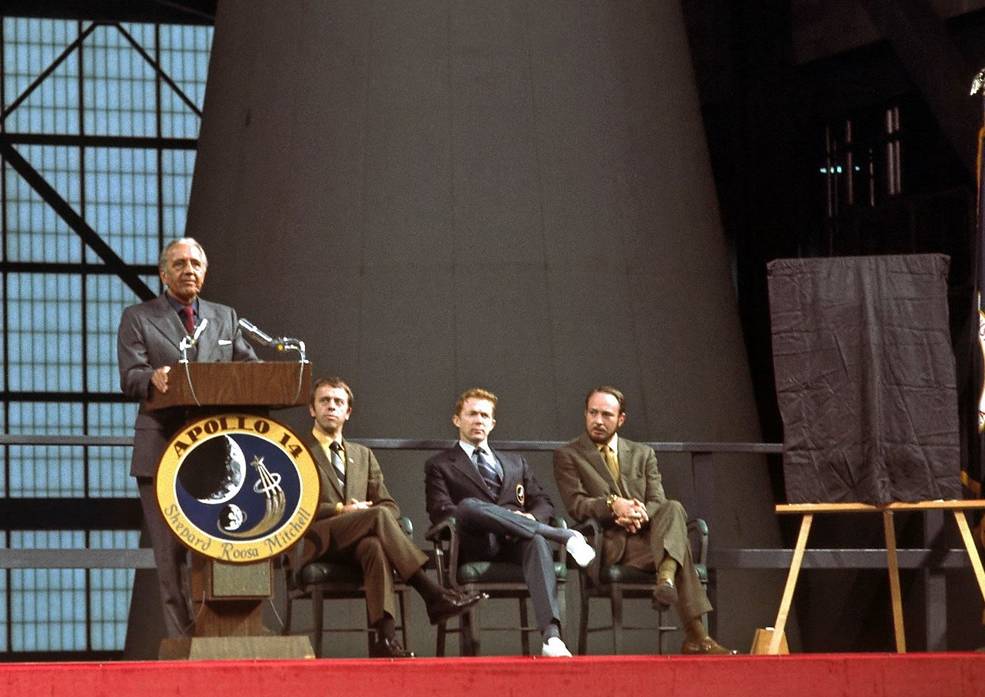
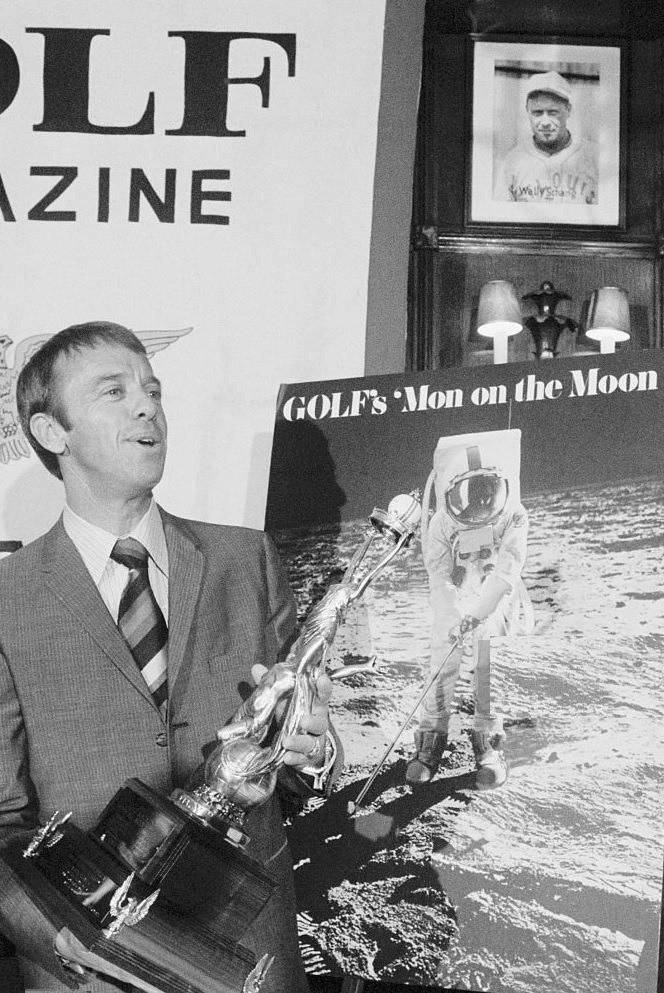
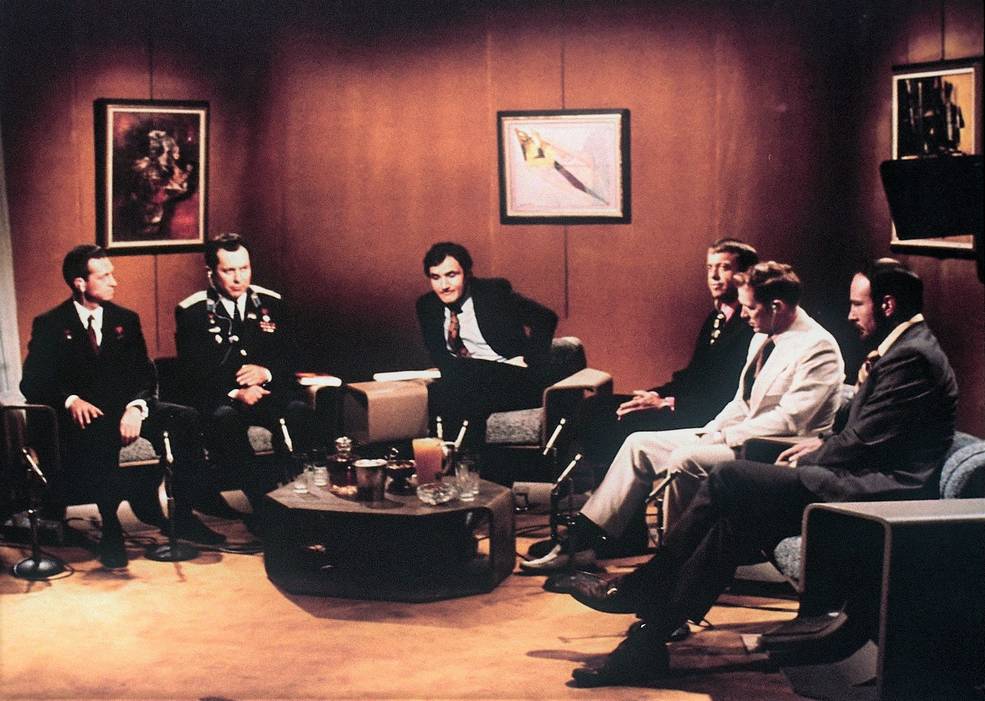
Left: Kurt H. Debus, director of NASA’s Kennedy Space Center, left, welcomes Apollo 14 astronauts Alan B. Shepard, Stuart A. Roosa, and Edgar D. Mitchell to a reception in the Vehicle Assembly Building. Middle: Shepard accepting a trophy from Golf Magazine for his lunar golfing exploits. Right: Soviet cosmonauts Vitali I. Sevastyanov and Pavel R. Popovich meet with Apollo 14 astronauts Shepard, Roosa, and Mitchell.
John Uri
NASA Johnson Space Center

























